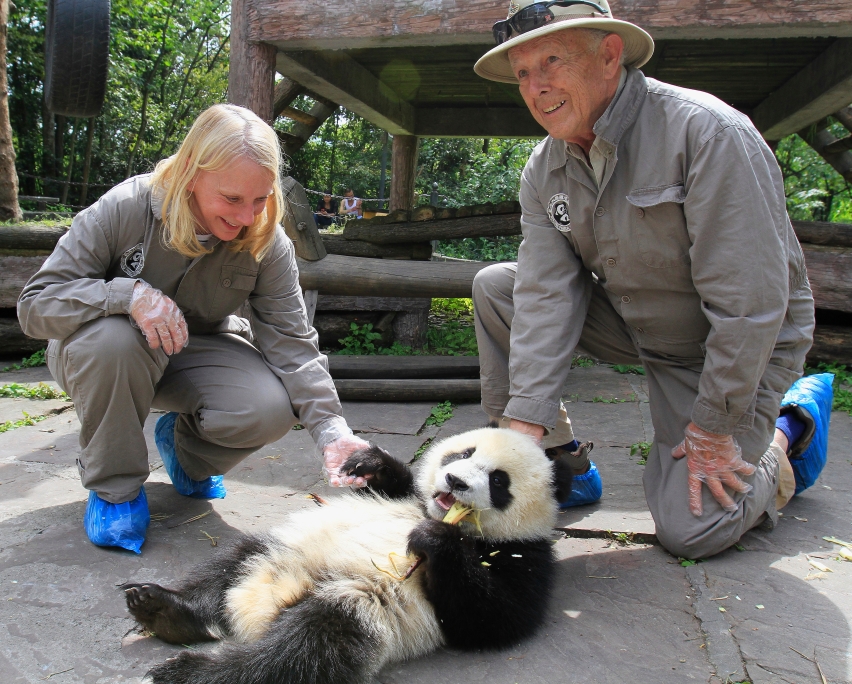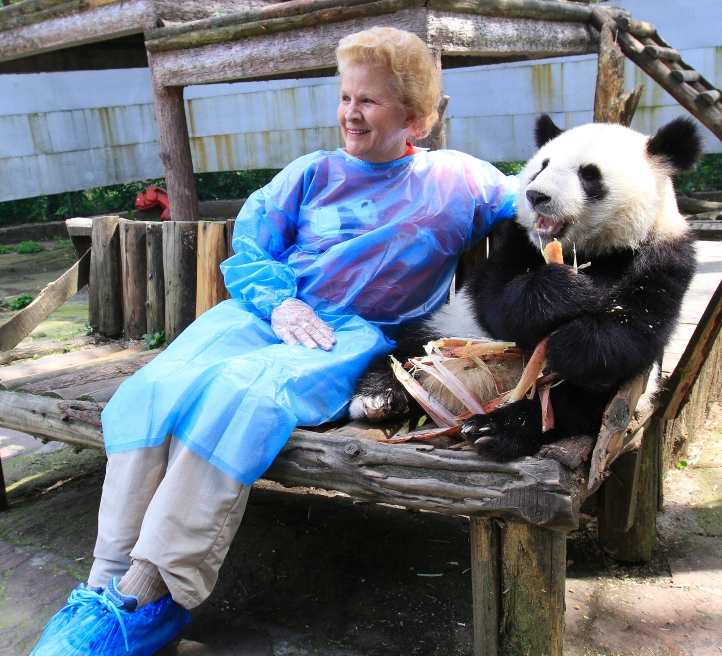Nat Hab expedition leader Brad Josephs just got back from leading the first two groups of our brand new China trip, The Wild Side of China: A Nature Odyssey. The success of the itinerary was beyond our wildest expectations, no pun intended! This new China wildlife trip travels to the more exotic and rugged areas of China, where the most rare wildlife lives. Keep reading to see some of the incredible wildlife encounters our travelers had on their recent trips to China. You can also watch our webinar about the new China itinerary with Brad Josephs himself.
The first of the remarkable wildlife sightings that Josephs dubbed the “golden three” was the rare Golden Takin, where the group happened upon 40 of them popping out of the bushes a mere 20 feet away on a secluded mountain trail. Given the takin’s size and ferocity, the group had to back away a bit from the potentially dangerous pack of mothers and calves.

“This young takin calf had no fear of us, and we actually had to be back up when it approached our group. It must have felt the good vibes of wildlife lovers. This was a once in a lifetime wildlife experience for me, and every member of our group.” -Brad Josephs
The next “golden three” sighting was the golden pheasant. They were plentiful in remote China, and Josephs calls viewing this bird in its natural habitat a “spiritual experience.”
For Josephs, the final “golden three” sighting qualified as one of his “wildlife fantasies, an animal he has searched for unsuccessfully in the past. The group spotted the golden snub-nosed monkey in a wildlife sanctuary that had never before been visited by western tourists. After hiking three miles uphill, the group saw and snapped photos of about 100 snub-nosed monkeys who were perching 300 yards away. Check out Josephs’ video of the takins swinging from branch to branch-
Not all of the animals the group saw were quite as elusive as the “golden three.” Although they are also endangered difficult to spot, the hot tempered yet beautiful Tibetan macaques came out in droves and were quite friendly in the reserves visited on this trip. These primates make some of the best facial expressions in all of the animal kingdom, making them a blast to photograph.
And what trip to China would be complete without seeing giant pandas? Unfortunately the group did not see pandas in the wild, as they are extremely endangered and difficult to find. They did get to view pandas up close at the breeding centers like the Bifengxia panda base, where they even got to cuddle up to some cute cubs! We look forward to growing this trip in the years to come because, in Josephs’ words, “going on this trip [is] the single best way to contribute to panda conservation, as we [are] pioneering responsible ecotourism, and setting a good example of how to put a value on these animals the right way.”




































